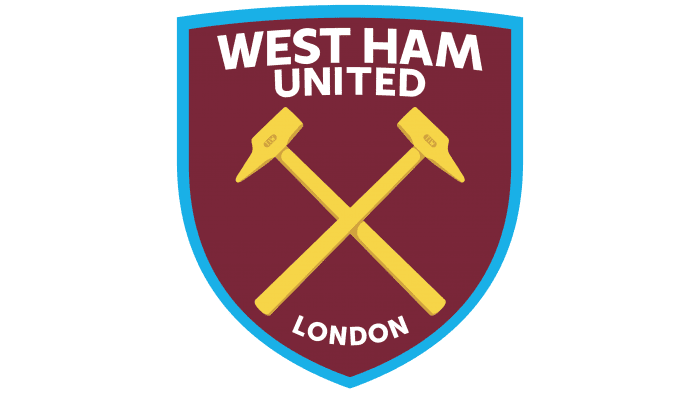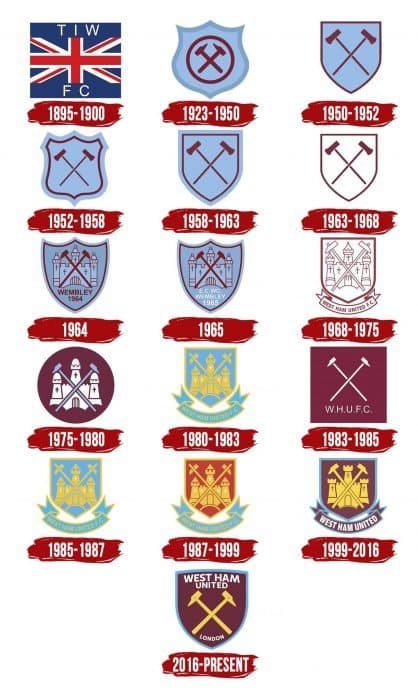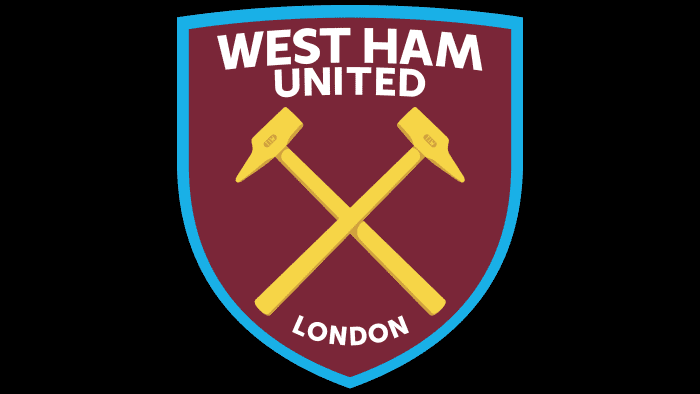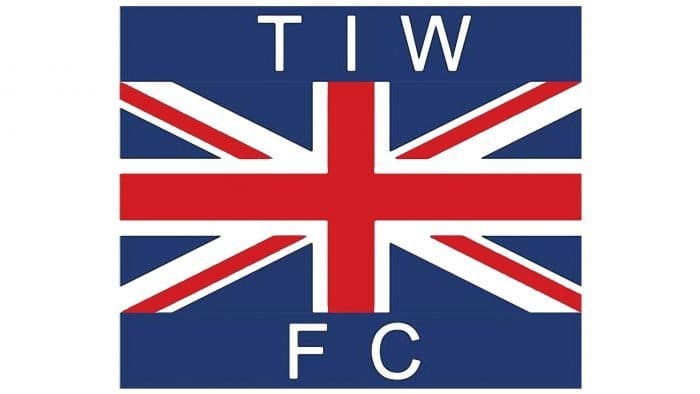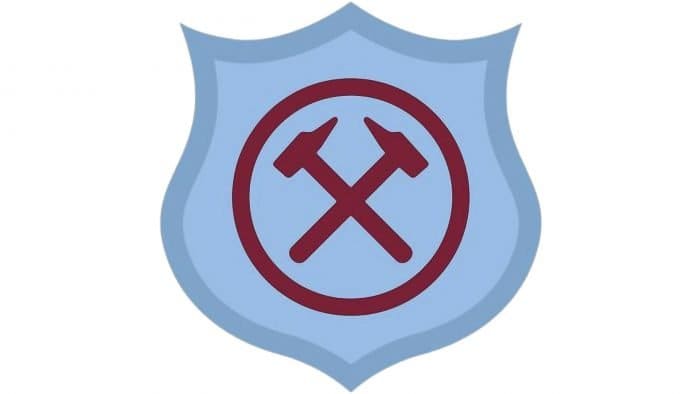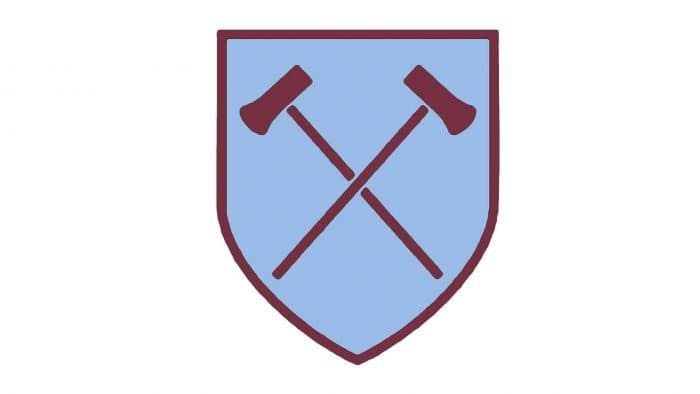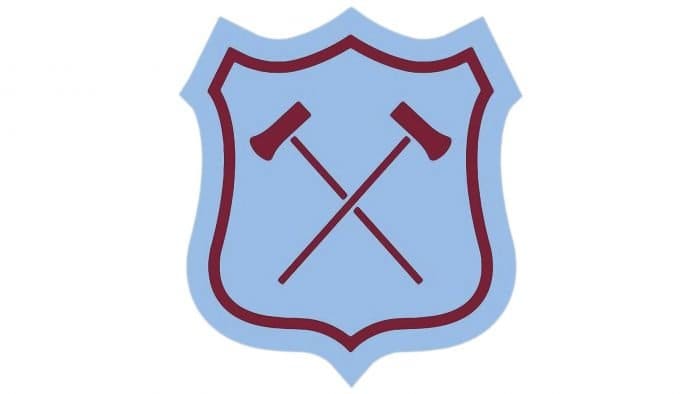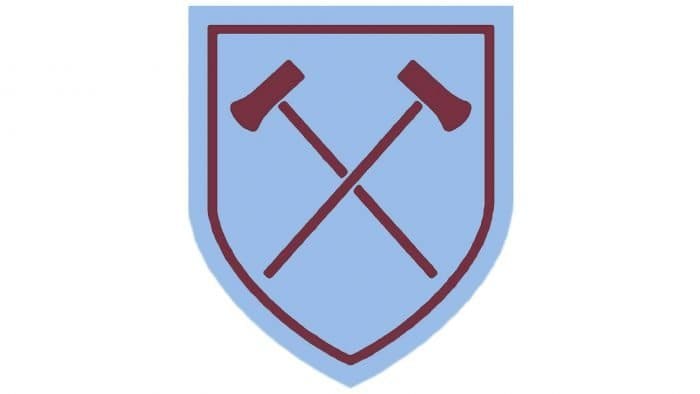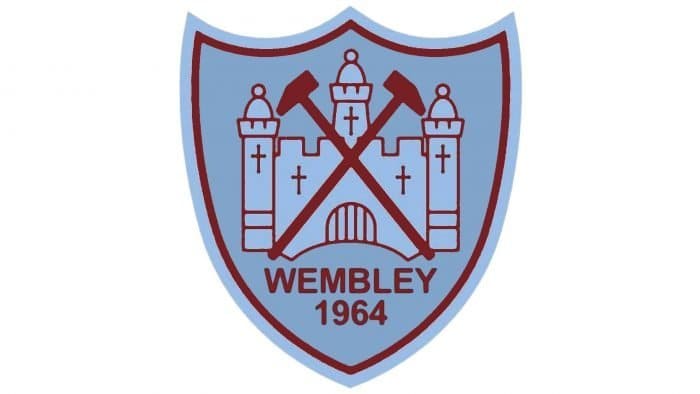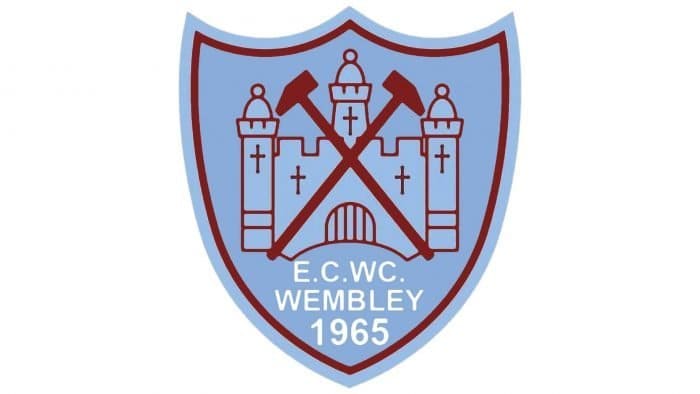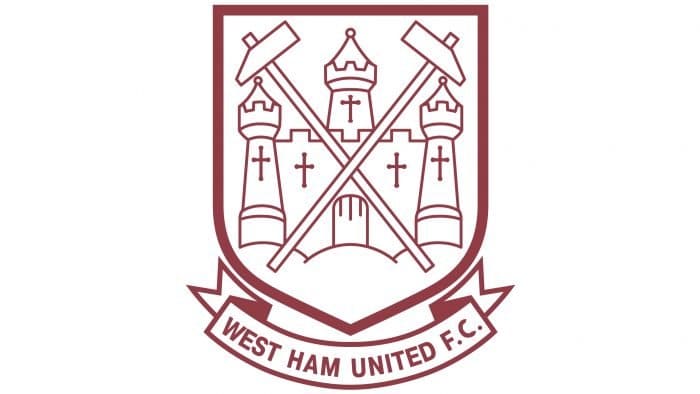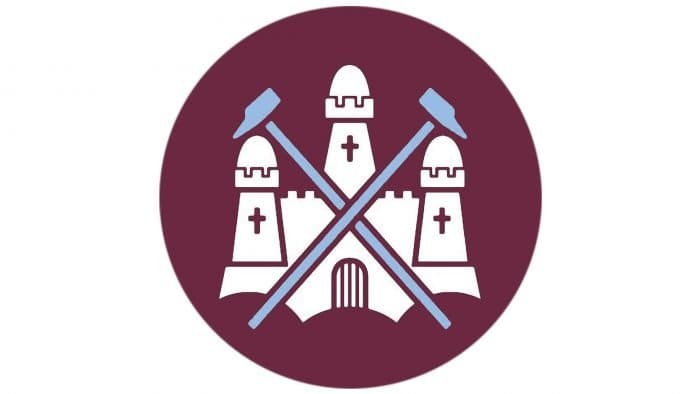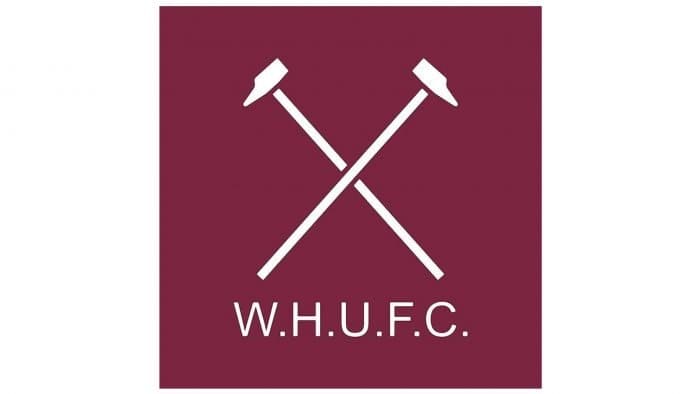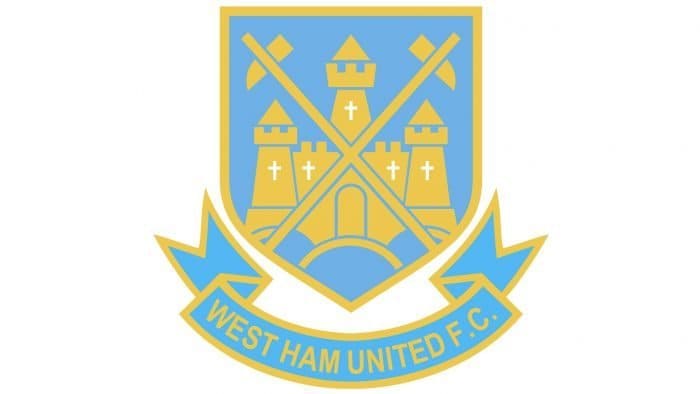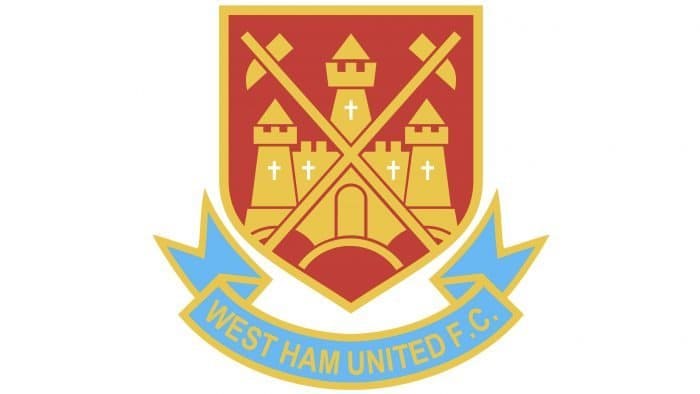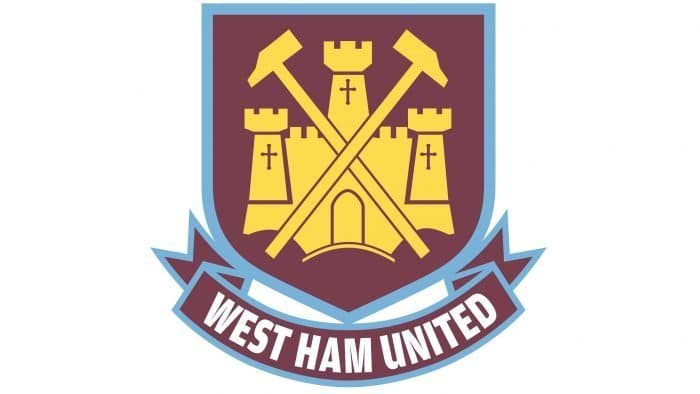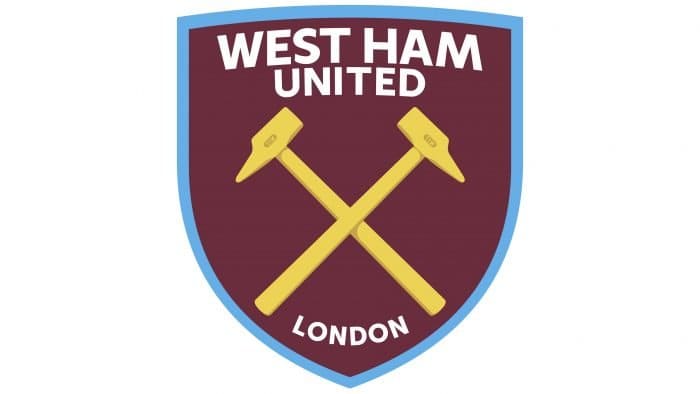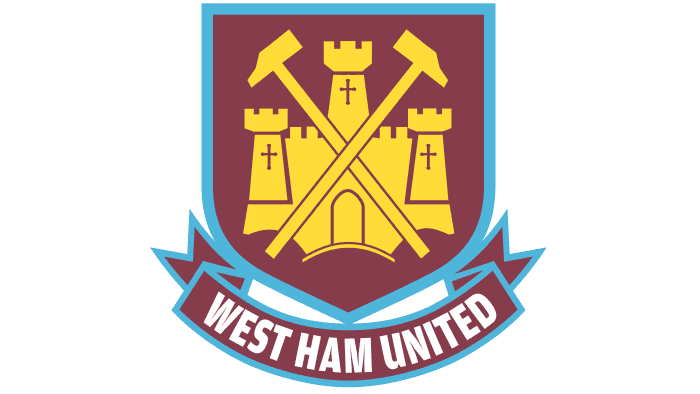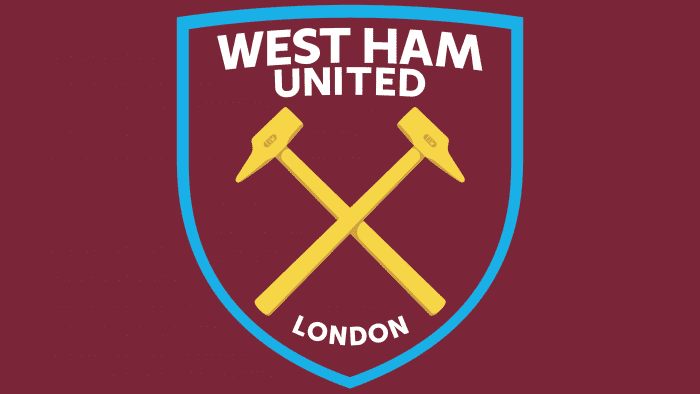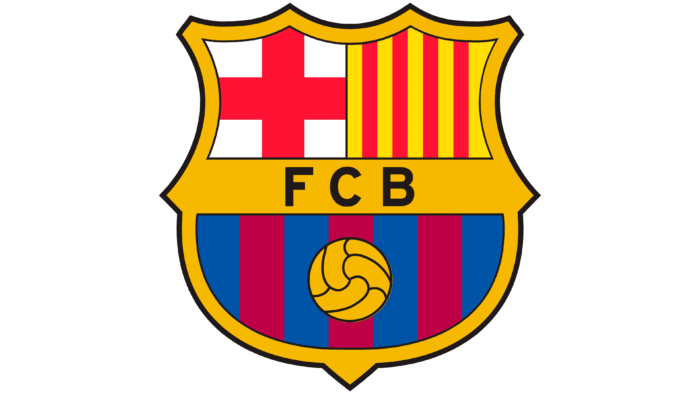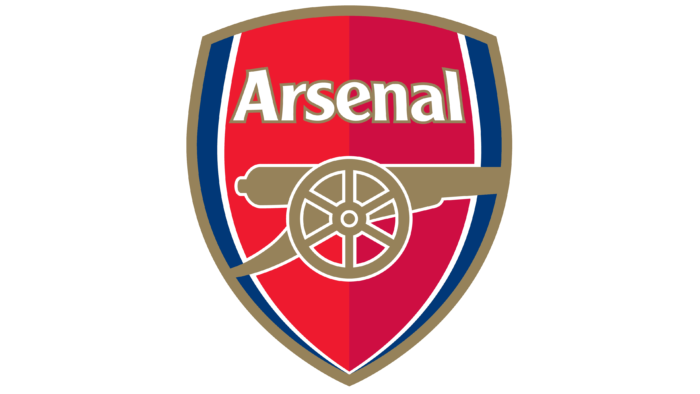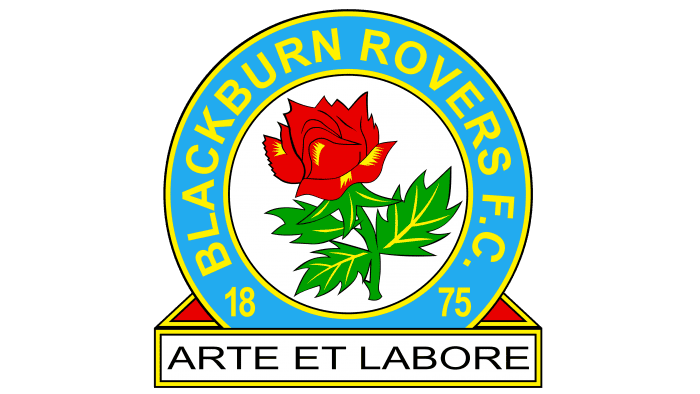British football features the football club “West Ham,” whose logo reflects the history of its establishment. The heraldic shield depicts the coat of arms of the founder’s enterprise. The club’s symbolism is a tribute to its history and respect for “West Ham,” demonstrating professionalism.
West Ham: Brand overview
| Founded: | 29 June 1895 |
| Founder: | David Sullivan, Daniel Křetínský, David Gold, Albert ‘Tripp’ Smith |
| Headquarters: | Stratford, East London, England |
| Website: | whufc.com |
The club, initially named Thames Ironworks F.C., was founded in 1895. It was owned by the Thames Iron Work Sand Shipbuilding Co. Ltd, a metallurgical and shipbuilding enterprise. Arnold Hills was the managing director, and Dave Taylor was the lead. In 1896, the “Irons” started playing in the London League and won it in the 1897-98 season. In 1898, the club moved to the Second Division of the Southern League and turned professional. The “Irons” won this tournament on their first attempt. In 1900, when the club became a limited liability company, Thames Iron Works F.C. changed its name to West Ham United F.C.
All major nicknames trace back to the club’s old name – Thames Ironworks, as well as to the hammers depicted on the emblem. Emphasizing the club’s importance in the formation of the national team, fans nicknamed “West Ham” the “football academy.” “West Ham” also has a somewhat derogatory nickname – “Cockney boys.” This is because “Cockney” referred to natives of London belonging to the lower and middle classes.
Meaning and History
West Ham has a rich history of changing logos, but over such a long period, the emblem has always had two constant elements: hammers and a castle, which was added a little later. Only the shape and color of the emblem have changed over time.
There’s no official confirmation of exactly when the crossed hammers became the symbol of “West Ham.” The “Thames Ironworks” players, who played as a team for the shipbuilding yard, were disbanded in 1900 and later resurrected as the professional club “West Ham United.” The earliest publication with an image of the hammers was the program of the official match season 1910/11. The team’s shipyard emblem was represented by an image of the British flag with the inscriptions T.I.W. on top and FC at the bottom.
The first image of a fortress appeared in official pre-match programs in the 1921/22 season. The castle, located at the home arena’s site, is traditionally associated with Henry VIII’s second wife, Anne Boleyn. However, this opinion is not based on facts, and the fortress was a building known as Green Street House. It was built in 1544, eight years after the execution of Anne Boleyn. Two years later, to emphasize the beauty of the local surroundings, a pair of towers were added to the house, one of which long survived after World War II (demolished in 1955).
After the 1957/58 season, when “West Ham” returned to the top English league, the fortress and crossed hammers began to be depicted separately on the emblem. The first image of the fortress and hammers as a whole composition appeared in a souvenir guide published in 1958. It was dedicated to the club’s return to the First Division.
Another interesting detail of the “West Ham” emblem is the shape of the shield. It resembles a part of the Royal British Navy’s armored frigate named Warrior, built by the Thames Ironworks in 1860.
Over the following decades, the crest underwent numerous changes, but the basic concept (crossed hammers on the background of a fortress) remained unchanged.
In the late 1990s, the “West Ham” logo was significantly reworked and updated by the London design agency Springett Associates. The fortress became yellow and wider, with fewer cross-shaped openings. The spike-like ends of the towers also disappeared. Designers changed the shape of the hammers, edging, and other minor details to give the logo more solidity. Thus, the modern “West Ham” was born.
In 2014, the Premier League club “West Ham” marked its move to the Olympic Stadium with a new emblem. Based on the traditional colors of the club, the new “West Ham” emblem has a simpler and more streamlined shape. The iconic image of the hammers was placed in the center of the emblem and painted in gold.
The fortress, which was on the previous emblem, disappeared, and the inscription “West Ham United” moved to the inner part and is now located at the top. The inscription “London” at the bottom of the emblem is a new detail that was not on the previous version of the “West Ham” logo.
Most “West Ham United” logos feature crossed hammers and Boleyn Castle. This concept has never changed: designers only experimented with shapes and colors.
What is West Ham?
“West Ham” is a British professional football club based in Stratford. It was founded in 1895 as a sports team of a shipbuilding company and has achieved great success, competing in the Premier League. Its original name was Thames Ironworks, which it left in 1900. English footballers also have the nickname The Hammers, as their emblem features two hammers.
1895 – 1900
In the year of its foundation, the club presented its debut emblem: an image of the British flag with the inscriptions “T I W” (top) and “F C” (bottom). This is the abbreviation of the football club’s name, Thames Iron Works.
1923 – 1950
After rebranding, the central image of the logo became crossed riveting hammers used in the shipbuilding industry. Similar hammers are found in the coat of arms of the county of West Ham and the London borough of Newham.
The tools reflect the club’s origin as the amateur team Thames Iron Works, founded by shipbuilders. The tools are surrounded by a burgundy ring and placed in the center of a stylized shield with a blue outline.
1950 – 1952
The new logo lacks the ring. The hammers are enlarged and occupy all the free space. The shield is quadrilateral, with a burgundy border around the perimeter.
1952 – 1958
In 1952, the design of the shield on the logo changed again. It resembles the 1923 version but with a double stroke.
1958 – 1963
The 1950 emblem returned. Now, the logo is surrounded by a wide blue line.
1963 – 1968
The blue color on the logo completely disappeared. The background became white.
1964 – FA-Cup-Final
During the FA Cup final, the club used a logo with hammers and Boleyn Castle. According to legend, it was inhabited by Anne Boleyn, the second wife of Henry VIII. At the bottom of the triangular shield is the inscription “Wembley 1964” – the name of the stadium and the year of the match.
1965 – E.C.W.C.Final
The logo dedicated to the E.C.W.C. final is similar to the previous one. The only difference is the inscription “E. C. W. C. Wembley 1965.”
1968 – 1975
The hammers and castle on the emblem are inside a quadrilateral heraldic shield with a sharp base. Below is a curved ribbon with the team’s name.
1975 – 1980
Key elements of the 1975 emblem are a large burgundy circle, a white castle with rounded towers, and blue hammers crossed in the center.
1980 – 1983
The 1968 version of the logo returned. The sketch now has more angles and straight lines. The color palette is yellow and blue.
1983 – 1985
For two years, minimalist symbols were used: a burgundy square with white crossed hammers and the abbreviation “W.H.U.F.C.”
1985 – 1987
An identical copy of the 1980 emblem.
1987 – 1999
The color palette of the emblem changed. The background inside the shield became red.
1999 – 2016
In 1997, designers at Springett Associates revised the style of the logo. The castle increased, and the triangular tops of the towers disappeared. A white inscription, “West Ham United,” appeared on the ribbon under the shield.
2016 – today
The new logo lacks Boleyn Castle because the club moved from “Boleyn Ground” to the London Olympic Arena. There are only hammers with the engraving “T.I.W.” on the sides – a tribute to the Thames Iron Works company. The team’s name moved to the top of the shield. Below is the word “London.” According to legend, the shape of the shield matches the cross-section of the frigate H.M.S. Warrior, but real diagrams prove otherwise.
West Ham: Interesting Facts
West Ham United Football Club is a well-known soccer team with a lot of history and fans who care about their team.
- How They Started: The team first came about in 1895, called Thames Ironworks FC, started by Arnold Hills and Dave Taylor. In 1900, they changed to West Ham United.
- Famous for Training Young Players: West Ham is good at helping young players become great, with some even winning the World Cup, like Bobby Moore, Geoff Hurst, and Martin Peters.
- Big Win in Europe: In 1965, they won a big European trophy by beating 1860 Munich, one of their proudest moments.
- Upton Park: They used to play at Upton Park for 112 years before moving in 2016. This place was special because it felt close and full of energy.
- New Stadium: They moved to the London Stadium in 2016, which was made for the 2012 Olympics. It’s a big, modern place that started a new chapter for them.
- Nickname: They’re called “The Hammers” because they begin with the Thames Ironworks and shipbuilding, and hammers are in their logo.
- Winning the FA Cup: They’ve won thrice (1964, 1975, and 1980). The win in 1980 was the last time a team not in the top division won the cup.
- World Cup Heroes: In 1966, England won the World Cup with much help from West Ham players Moore, Hurst, and Peters.
- Big Rivalries: Their biggest rivalry is with Millwall, which goes back a long way because both teams’ fans worked in the docks in East London.
- In Movies and TV: The team and its fans have been featured in movies like “Green Street Hooligans,” which examines soccer fans and their intense support.
West Ham United’s story is filled with big wins, strong community ties, and playing a big part in soccer history, showing the love and tradition of the sport.
Font and Colors
The two crossed hammers on the “West Ham” logo are symbols of the distant past. They remind us that the club was once called Thames Iron Works and was founded by shipyard workers. However, the designers could have chosen any other element related to shipbuilding. Why exactly riveting hammers? They didn’t appear by accident: such signs can be found on the coat of arms of the area, meaning they are a national treasure. So here, we see not so much historical as political context.
The inscription “WEST HAM UNITED LONDON” is as integral an element of the logo as the crossed hammers. It is divided into two parts: the full name of the team is located at the top, and the word “LONDON” is at the bottom corner of the shield. To draw attention to them, designers used the Futura Bold Condensed font – a geometric sans-serif created in the distant past by German typographer Paul Renner.
Special attention was given to the selection of the color palette. They combined dark burgundy (#7A263A), yellow (#F3D459), light blue (#1BB1E7), and white, and in some cases, even combined several shades of one color to create a gradient.
West Ham color codes
| Puce Red | Hex color: | #7a263a |
|---|---|---|
| RGB: | 122 38 58 | |
| CMYK: | 0 69 52 52 | |
| Pantone: | PMS 1955 C |
| Battery Charged Blue | Hex color: | #1bb1e7d |
|---|---|---|
| RGB: | 227 212 173 | |
| CMYK: | 0 4 20 7 | |
| Pantone: | PMS 312 C |
| Naples Yellow | Hex color: | #f3d459 |
|---|---|---|
| RGB: | 243 212 89 | |
| CMYK: | 0 13 63 5 | |
| Pantone: | PMS 128 C |
